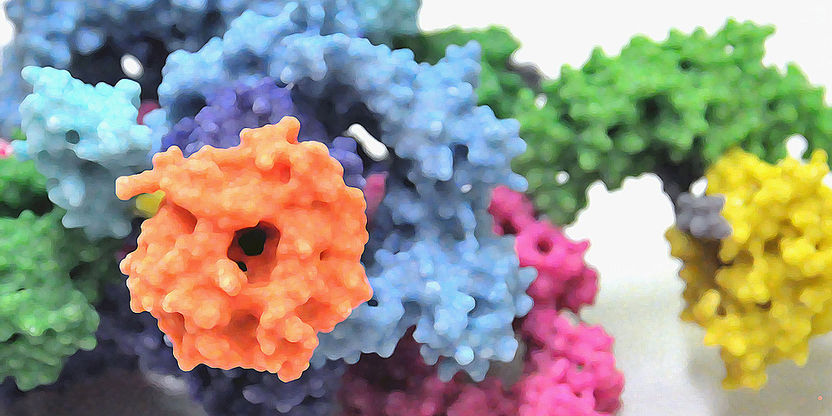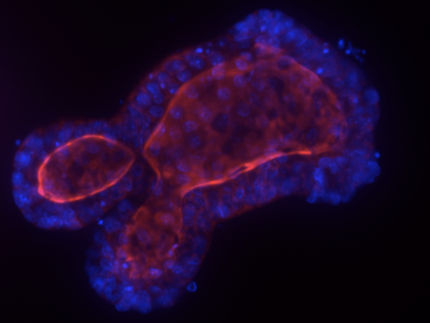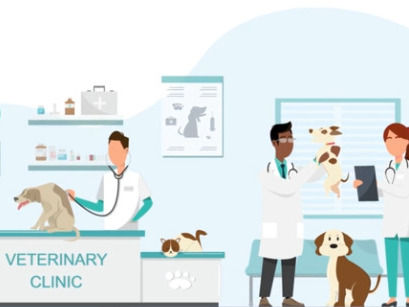'Cross-talk' mechanism contributes to colorectal cancer
Researchers at the University of Wisconsin-Madison School of Medicine and Public Health have identified a molecular mechanism that allows two powerful signaling pathways to interact and begin a process leading to colorectal tumors. The research will appear in Cancer Research.
"We are very excited about these findings," says Vladimir Spiegelman, an associate professor of dermatology. "Drugs could be developed to block this mechanism and prevent colorectal cancer, which affects millions of people worldwide."
Spiegelman and his team study cellular processes that produce several types of cancer. They have focused recently on the Wnt signaling pathway, which has been implicated in the vast majority of all colorectal cancers. Like all signaling pathways, this one involves a group of molecules that work in sequence to perform a specific cell function. At each step along the way, the molecules perform tasks outlined in the signals until the job is finally done. If there's a breakdown anywhere in the normal process, cancer can occur. In an earlier paper published in Nature, Spiegelman's team described how signals in the Wnt pathway regulate CRD-BP, a gene that contributes to normal colorectal cells' changing into tumor cells.
"Within the Wnt pathway, we found that CRD-BP binds to and increases the messenger RNA of a cancer-promoting transcription factor called GLI1," Spiegelman explains.
The scientists knew that GLI1 was also active in another signaling pathway, called Hedgehog, which is known to be associated with the development of several kinds of cancers although its role in colorectal cancer has been controversial. So they explored how the two pathways interact around CRD-BP and GLI1 messenger RNA.
"Scientists have postulated that these two pathways engage in cross-talk in different ways, but the mechanisms of how and where that happens have been unclear," Spiegelman says. Each pathway, he adds, contributes in important ways to normal embryonic development and stem-cell maintenance.
The team found that CRD-PB serves as the link between the Wnt and Hedgehog pathways. From the Wnt pathway, CRD-PB imposes itself on the Hedgehog pathway, stabilizing and dramatically increasing the expression of GLI1 messenger RNA there.
"This occurs irrespective of what happens upstream in the Hedgehog pathway," says Spiegelman. "Hedgehog signaling is not necessary for this to occur, even though the outcome mimics the activation of the Hedgehog pathway."
Increased GLI1 then activates cancer-promoting genes that are usually considered downstream targets of the Hedgehog pathway. The findings point to promising therapeutic possibilities, says Spiegelman.
"GLI1 by itself could be an excellent target for a potential blocking drug," he says. "But if we go upstream and target CRD-PB, we can affect the two different signaling pathways even more effectively."
Organizations
Other news from the department science

Get the life science industry in your inbox
By submitting this form you agree that LUMITOS AG will send you the newsletter(s) selected above by email. Your data will not be passed on to third parties. Your data will be stored and processed in accordance with our data protection regulations. LUMITOS may contact you by email for the purpose of advertising or market and opinion surveys. You can revoke your consent at any time without giving reasons to LUMITOS AG, Ernst-Augustin-Str. 2, 12489 Berlin, Germany or by e-mail at revoke@lumitos.com with effect for the future. In addition, each email contains a link to unsubscribe from the corresponding newsletter.
More news from our other portals
Last viewed contents
John_Todd_(biologist)
Ciliary_ganglion
Blocking release of the hormone ghrelin may mediate low blood sugar effect
Ouabain




















































